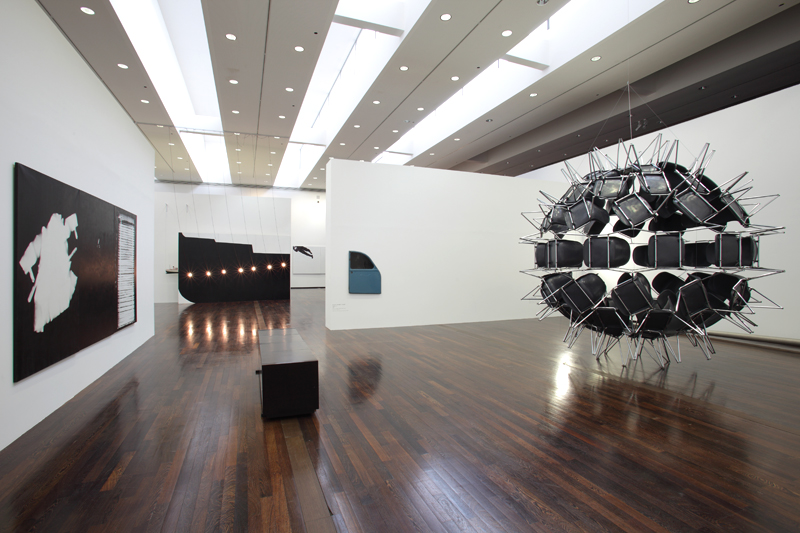An English word for a ‘French’ collection? In fact, it is the title of one of Verlaine’s most beautiful poems, the first words of which – ‘Memories, memories, what do you want of me?’ – were spoken to me under her breath by Agnès Varda when I told her about the new hanging of the collection, in which she features.
Evoking memory, this new sequence celebrates the Museum’s birthday by relating part of the story of the collection. It reminds us that memory is its mission, its subject, just as it is the subject of any public collection. Five years already: five years working closely with artists, close to this art scene that MAC/VAL is now the only museum to champion and make visible – the contemporary French scene, with its major figures, its emerging artists, those who are in the spotlight and those still more in the shade, but also the foreigners who are enriching ‘our history’ of art, as guests in the exhibitions, on residencies, and then in the collection itself. Today, in memory of the Museum’s inauguration, we are presenting a number of works that made a particular impression at the opening, but also some newcomers. Since the role of every collection is to put together a memory in order to build up a heritage, by conjugating past, present and future at the same time (and in the same tense), today we are choosing to assemble the artworks around the theme of ‘memories.’
Remembering is what defines us as human beings. Memory is what grounds us in the Earth, gives us our density, our strengths and weaknesses. It is individual, collective, shared or selective. It is ‘good’ or ‘bad’ and, sooner or later, it fails us. It is made up of images, of sounds, of impressions, of lacks and shadowy areas. It is light and brilliance. It is silence. Going back to the roots of the collection and to the light/kinetic artists naturally brought out this idea: light as appearance and remanent trace, as inscription, as play too, and as a way of positioning art in society in the 1960s. From this joyous, uninhibited approach by the artists of GRAV (Groupe de Recherche d’Art Visuel) stemmed the subject of memory – more melancholy, perhaps, but still intensely grounded in life.
The project took shape as a ‘whole,’ an array of works relating to memory laid out across the spaces: a hanging that in fact is rather black and white, like old family albums, with a few spurts of colour where light summons memory. In their own unique ways, these works question the relation to time, to absence and lack, and pose the question of the trace. And also, these works are memories in themselves: memories of past hangings, of times past. This interplay imbued with nostalgia weaves the fabric that binds our mission, which is to produce a memory from a present that is relative and uncertain, and from the history of the works.
As always in the hangings at this Museum, different artistic forms and generations come together around a shared subject. Memories for the telling, but also memories to be forged with the artists who will intervene in the collection ‘in the present.’ Today we are inaugurating a new project, ‘Featuring,’ a programme invented for its first guest, Pierre Buraglio, in resonance not only with his work but also with his love of jazz. Pierre Buraglio is one of the most faithful and bestloved artists in the Museum collection. He gave many works to the Département, in support of the museum project. Today he is once again living in Val-de-Marne, where he is taking up the history his family constructed here when they left Italy. He remains very much a part of our world, continuing his work with determination and humility, going deep into questions of history, memory, traces and absence. For that reason, his presence in this hanging, resonating with the museum’s birthday, seemed to us both natural and essential. Because it is something that helps constitute memory, fidelity is something that we seek to develop at MAC/VAL, by keeping in touch with our artists, through substantial linkage of the permanent collection and temporary exhibitions, by pursuing projects over the years with artists who have been here on residencies, and by developing relations with younger artists.
These are the pleasures and the privilege that we want to share with the public: an encounter far from anything commonplace or ‘normal,’ one that is unexpected and off the beaten track. An opportunity to meet people who have a different story to tell, singular visions that overturn our certainties about the world and show what goes on behind the scenes.
Alexia Fabre, chief curator
